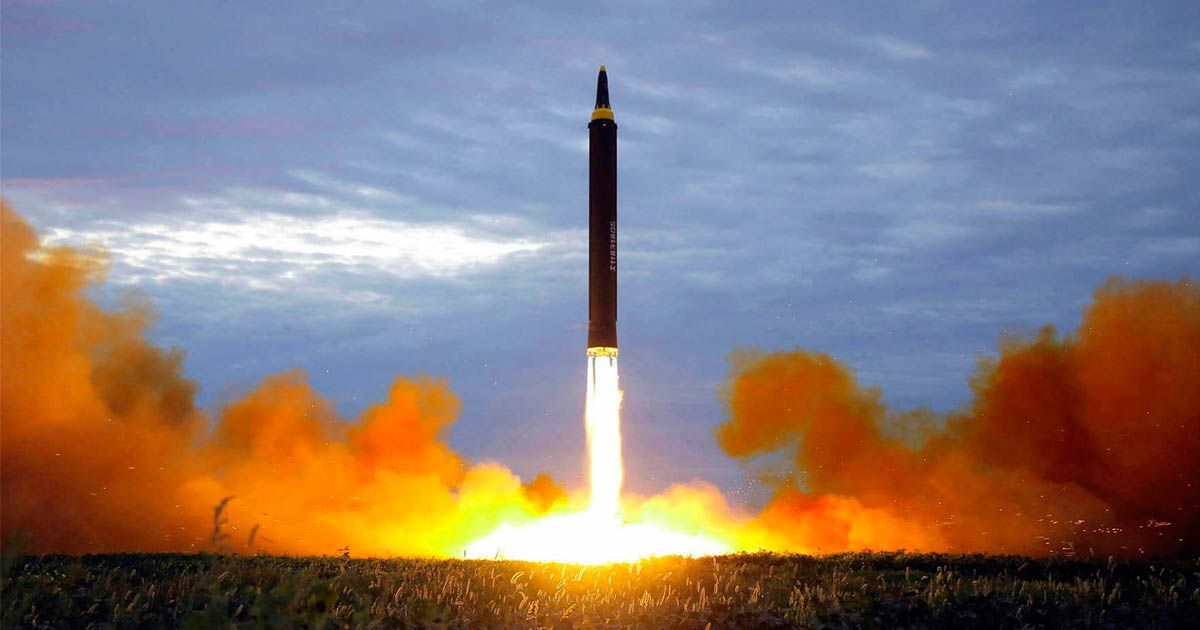
SEOUL, March 25: North Korea test-fired its first ballistic missiles since President Joe Biden took office on Thursday, as it expands its military capabilities and increases pressure on Washington while nuclear negotiations remain stalled.
Japanese Prime Minister Yoshihide Suga said the launches threaten “peace and safety in Japan and the region,” and that Tokyo will closely coordinate with Washington and Seoul on the North’s testing activities.
South Korea’s Joint Chiefs of Staff said the missiles were fired at around 7:06 am and 7:25 am from an area on the North’s eastern coast and flew 450 kilometeres (279 miles) on an apogee of 60 kilometeres (37 miles) before landing in the sea.
US Indo-Pacific Command spokesperson Capt Mike Kafka said the US military was aware of the missiles and was monitoring the situation while closely consulting with allies.
Another senior US official, who spoke on condition of anonymity to discuss military observations, matched the information from South Korea’s military, saying that initial assessments suggest the North fired two short-range ballistic missiles.
“This activity highlights the threat that North Korea’s illicit weapons programme poses to its neighbours and the international community,” Kafka said.
The launches came a day after US and South Korean officials said the North fired short-range weapons presumed to be cruise missiles into its western sea over the weekend.
North Korea has a history of testing new US administrations with missile launches and other provocations aimed at forcing the Americans back to the negotiating table.
Still, Thursday’s launches were a measured provocation compared to the nuclear and intercontinental missile tests in 2017 that inspired war fears before the North shifted toward diplomacy with the Trump administration in 2018.
Analysts say that the North would gradually dial up its weapons displays to increase its bargaining power as it angles to get back into stalled talks aimed at leveraging nuclear weapons for badly-needed economic benefits.
It’s unclear how the Biden administration would respond before it completes its policy review on North Korea in the coming weeks.
The negotiations over the North’s nuclear programme faltered after the collapse of Kim Jong Un’s second summit with President Donald Trump in February 2019, when the Americans rejected North Korean demands for major sanctions relief in exchange for a partial surrender of their nuclear capabilities. Since Trump’s first meeting with Kim in 2018, the North has not conducted nuclear-or long-range missile tests, although analysts believe they have pressed ahead with their programmes on both.
The North has continued short-and medium-range missile testing during its suspension of nuclear-and long-range tests, expanding its ability to strike targets in South Korea and Japan, including US bases there.
North Korea has so far ignored the Biden administration’s efforts to reach out, saying it won’t engage in meaningful talks unless Washington abandons its “hostile” policies.
Kim’s powerful sister last week berated the United States over its latest round of combined military exercises with South Korea that ended earlier this month, describing the drills as an invasion rehearsal and warned Washington to “refrain from causing a stink” if it wants to “sleep in peace” for the next four years.
Just hours after Thursday’s launches, South Korea Foreign Minister Chung Eui-yong was to meet with visiting Russian Foreign Minister Sergey Lavrov in Seoul for discussions on North Korea and other regional issues. South Korea’s presidential office said it will hold an emergency National Security Council meeting to discuss the launches.
South Korea’s Defence Ministry said the North’s short-range tests on Sunday were its first missile firings since April 2020. President Joe Biden played down those launches, telling reporters, “There’s no new wrinkle in what they did.” – AP
--------------------------------------------------------
What N Korean missile tests mean for US relations!
SEOUL, March 25: New US President, same old North Korean playbook. Almost.
Two months after President Joe Biden took office, North Korea is again turning to weapons tests to wrest outside concessions. But the tests so far have been relatively small compared to past launches. That indicates Washington has a window of engagement before North Korea pursues bigger provocations.
This week, North Korea’s neighbours reported the country fired four short-range missiles into the sea in its first missile launches in about a year. The launches – two on Sunday, two on Thursday – came after the North said it had rebuffed dialogue offers by the Biden administration, citing what it called US hostility.
North Korea has a long history of performing major weapons tests around the time new governments take power in the United States and South Korea.
This week’s weapons tests largely appear to follow that playbook, but experts believe the country held back from a more serious a provocation because the Biden administration is still evaluating its North Korea policy.
The four missiles fired this week were all short-range and don’t pose a direct threat to the US mainland. According to South Korea’s assessment, the first two weapons launched on Sunday were believed to be cruise missiles. But Japan said the two fired on Thursday were ballistic missiles.
“The basic pattern isn't much different. But while North Korea in the past focused on showing off its maximum capability when a new government came in the United States, I feel the North is trying to control the level of (its provocation),” said Du Hyeogn Cha, an analyst at Seoul's Asan Institute for Policy Studies.
What it has always wanted: for “the United States to lift sanctions while letting it maintain its nuclear capability,” said Moon Seong Mook, an analyst for the Seoul-based Korea Research Institute for National Strategy.-AP

